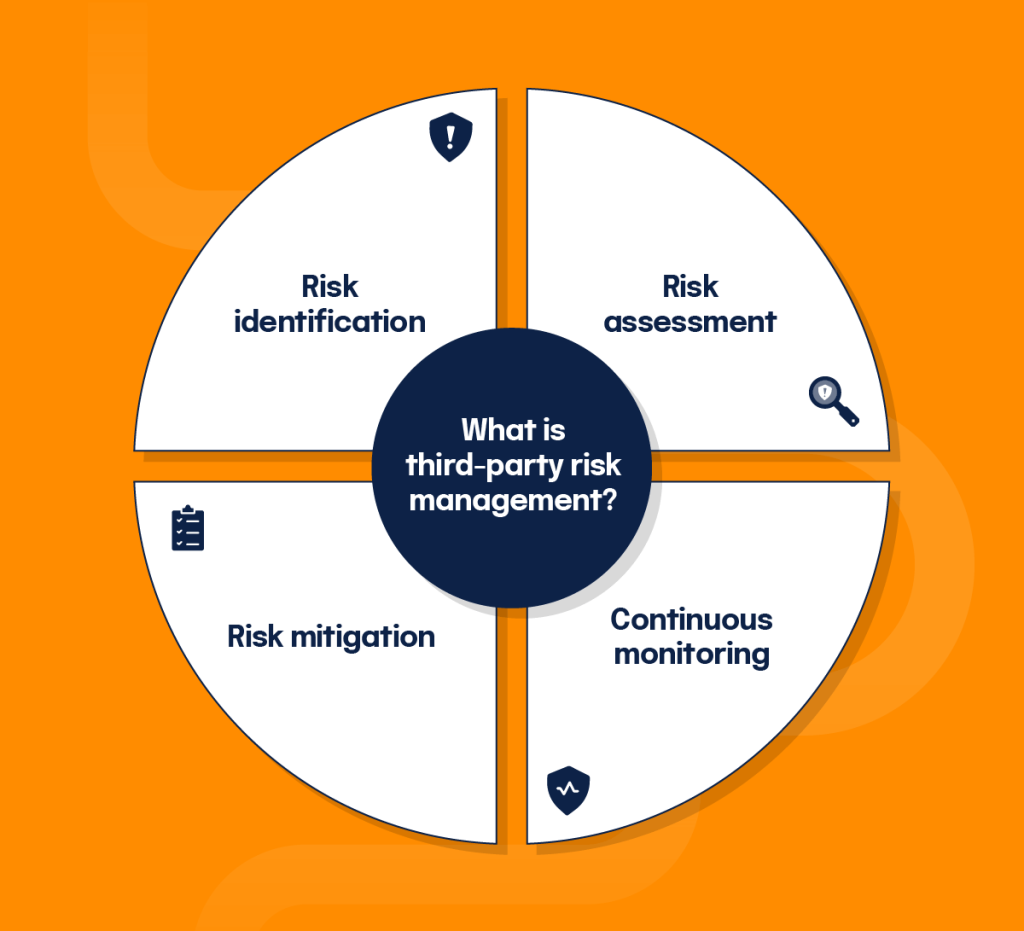
- Third-party risk Management (TPRM) helps organizations mitigate risks posed by vendors, service providers, and other external entities with access to internal systems.
- The TPRM lifecycle involves risk planning, due diligence, contract negotiations, ongoing monitoring and termination – all enhanced by an iterative feedback loop.
- Implementing an effective TPRM program requires integrating existing cybersecurity frameworks, regulatory compliance, and vendor tiering to prioritize critical risks.
Third-party relationships are vital to business operations, but they also pose significant security risks. Outsourcing to vendors and other external entities exposes organizations to potential data breaches, with third-party vulnerabilities ranking among the top causes of security incidents. The 2022 IBM and Ponemon Institute report highlights that third-party software vulnerabilities resulted in breaches costing up to $4.55 million. To mitigate these risks, organizations are encouraged to implement a robust Third-Party Risk Management (TPRM) program, which encompasses Vendor Risk Management (VRM) but extends to include all external partnerships including contractors, customers, partners and any entity with which data is shared or exposed to.
TPRM focuses on identifying, analyzing, and minimizing risks associated with third parties. The TPRM lifecycle includes five key stages:
- Risk planning involves evaluating the organization’s risk appetite and categorizing vendors based on access to sensitive information.
- Due diligence follows, using questionnaires and security ratings to assess vendors’ inherent risks.
- Contract negotiations establish security standards, breach notification requirements, and audit rights.
- Ongoing monitoring ensures continuous evaluation of vendor compliance, security posture, and alignment with service-level agreements.
- Finally, the termination phase involves revoking access and confirming data deletion when contracts end. An integrated feedback loop helps organizations adapt to emerging risks and regulatory changes.
Successful TPRM requires comprehensive evaluation methods. Security ratings, penetration testing, and virtual and onsite evaluations provide insights into vendors’ cybersecurity controls. Despite their importance, organizations face common challenges in TPRM implementation, including a lack of awareness, slow processes, inconsistent assessments, and limited visibility into vendor security. Addressing these issues requires standardized procedures, effective communication, and automation tools for tracking and managing vendor assessments.
Integrating TPRM with existing cybersecurity frameworks strengthens overall risk management. This involves mapping critical data lifecycles, updating enterprise risk management (ERM) frameworks, defining corporate risk appetites, and drafting specific TPRM policies aligned with regulatory requirements like GDPR, PCI DSS, and ISO 27001. Establishing vendor tiering prioritizes monitoring efforts on high-risk vendors. By implementing these practices, organizations can reduce exposure to third-party breaches, enhance compliance, and build more resilient partnerships.


Leave a Reply
You must be logged in to post a comment.